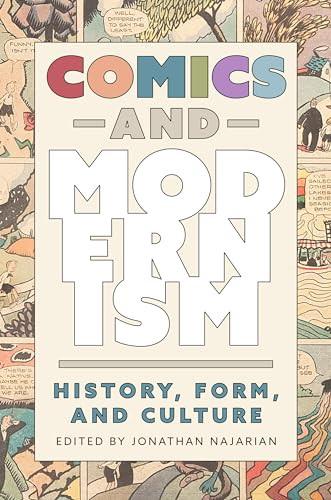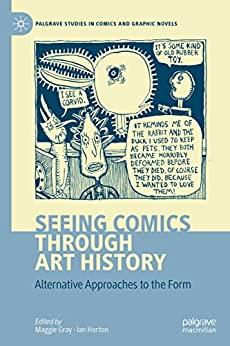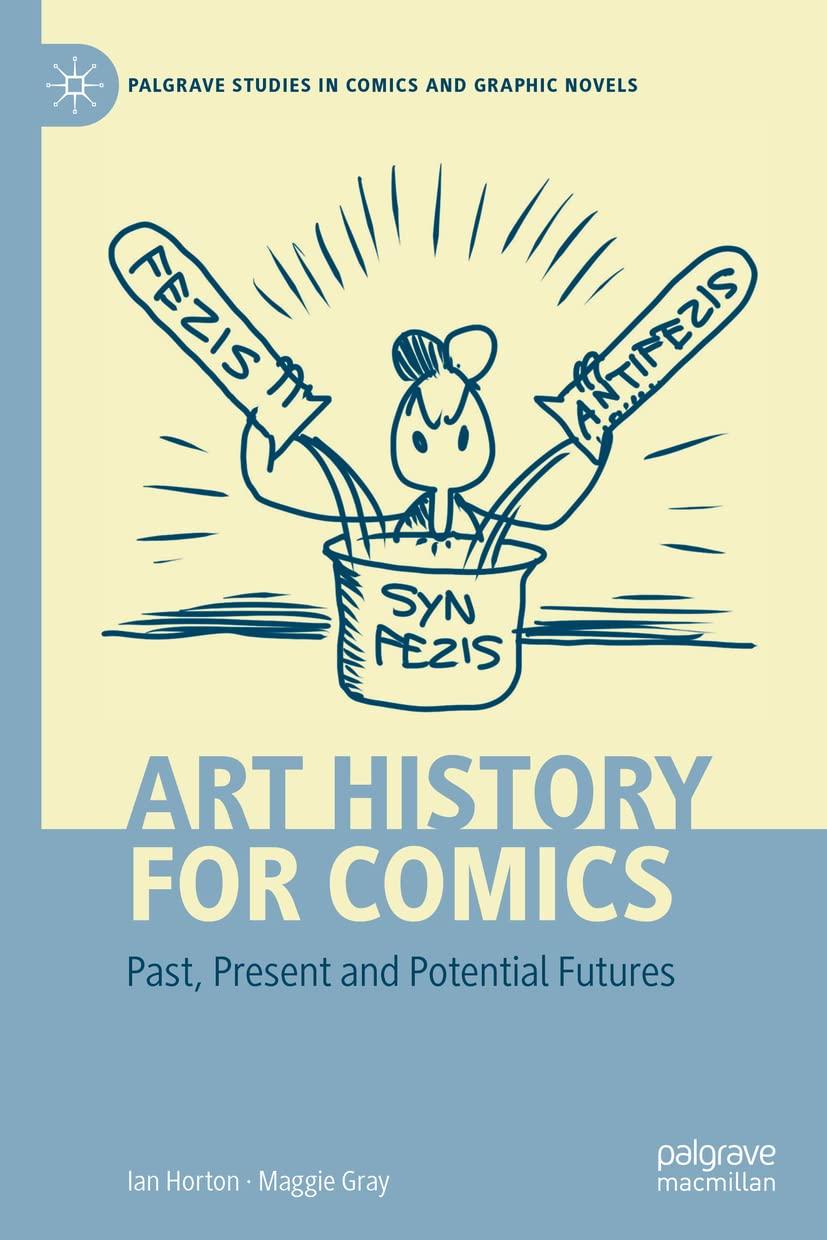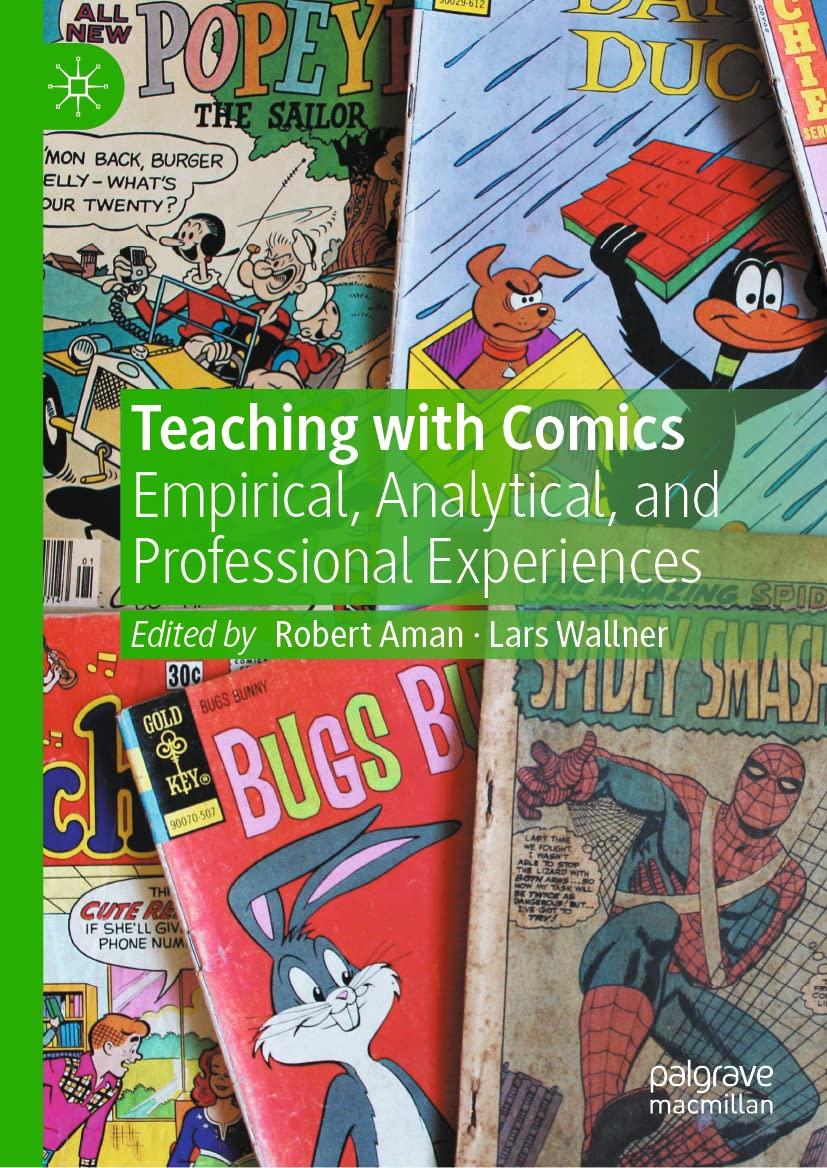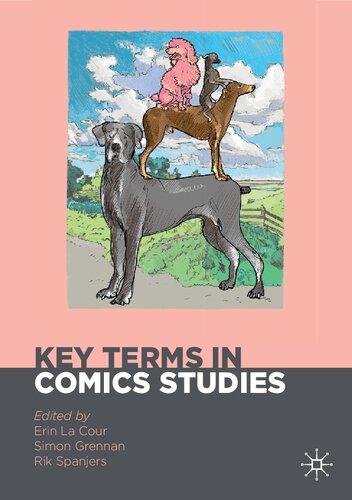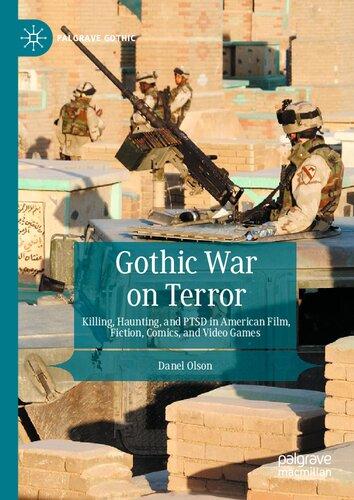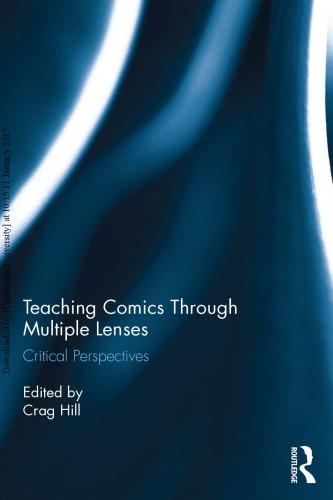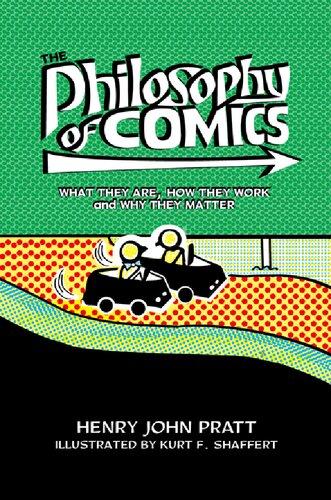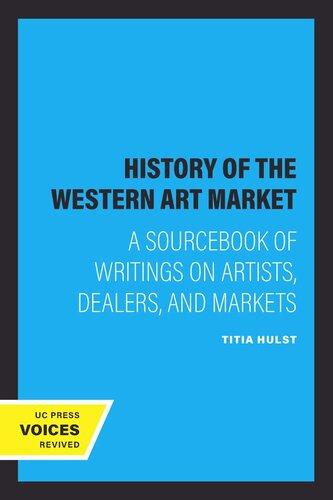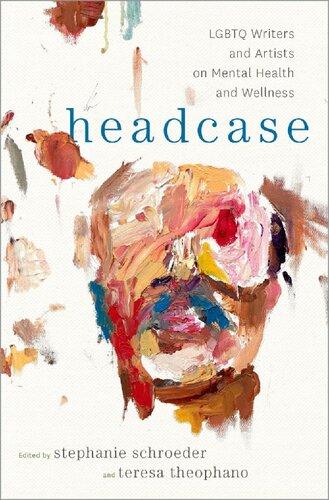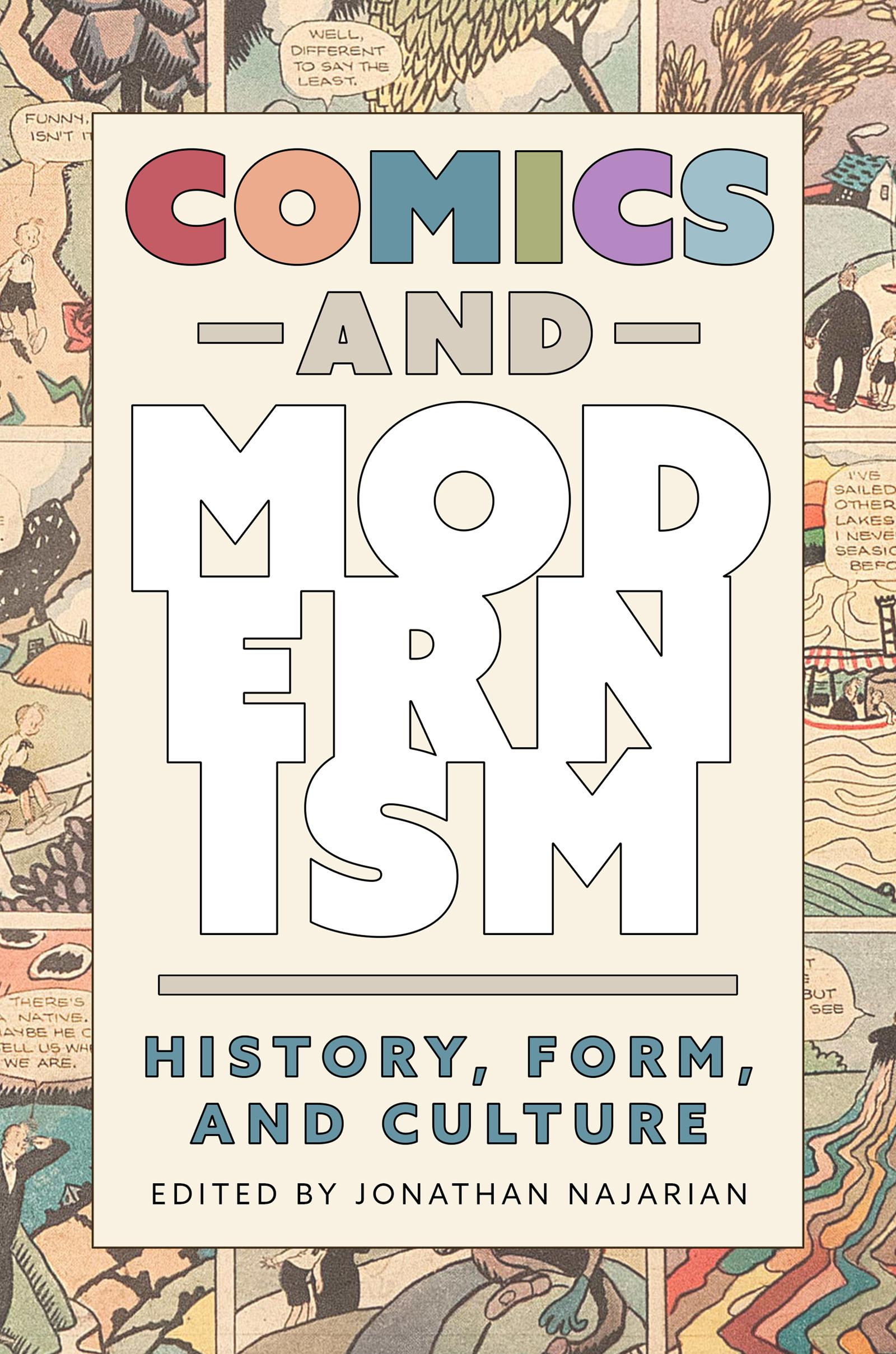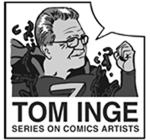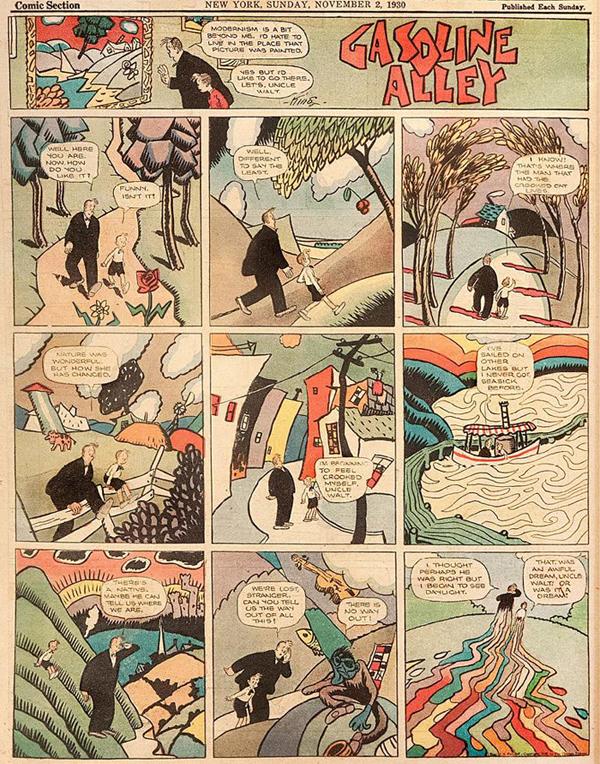COMICS -AND- MODERNISM
HISTORY, FORM, AND CULTURE
EDITED BY JONATHAN NAJARIAN
UNIVERSITY PRESS OF MISSISSIPPI / JACKSON
Publication of this book has been generously supported by a subvention from Colgate University.
The University Press of Mississippi is the scholarly publishing agency of the Mississippi Institutions of Higher Learning: Alcorn State University, Delta State University, Jackson State University, Mississippi State University, Mississippi University for Women, Mississippi Valley State University, University of Mississippi, and University of Southern Mississippi.
www.upress.state.ms.us
The University Press of Mississippi is a member of the Association of University Presses.
Copyright © 2024 by University Press of Mississippi All rights reserved Manufactured in the United States of America
The essay “Four Repulsive Women: Marjorie Organ, Nell Brinkley, Kate Carew, Djuna Barnes” by Jean Lee Cole is forthcoming in Modernism/modernity Print Plus. Copyright © Johns Hopkins University Press. Reprinted by permission.
Library of Congress Cataloging-in-Publication Data
Names: Najarian, Jonathan, editor.
Title: Comics and modernism : history, form, and culture / Jonathan Najarian. Other titles: Tom Inge series on comics artists.
Description: Jackson : University Press of Mississippi, 2024. | Series: Tom Inge series on comics artists | Includes bibliographical references and index.
Identifiers: LCCN 2023039956 (print) | LCCN 2023039957 (ebook) | ISBN 9781496849571 (hardback) | ISBN 9781496849588 (trade paperback) | ISBN 9781496849595 (epub) | ISBN 9781496849601 (epub) | ISBN 9781496849618 (pdf) | ISBN 9781496849625 (pdf)
Subjects: LCSH: Comic books, strips, etc.—Philosophy. | Comic books, strips, etc.— History and criticism. | Graphic novels Philosophy. | Graphic novels History and criticism. | Philosophy in comics. | Modernism (Art)
Classification: LCC PN6714 .C649 2024 (print) | LCC PN6714 (ebook) | DDC 741.5/9 dc23/eng/20231010
LC record available at https://lccn.loc.gov/2023039956
LC ebook record available at https://lccn.loc.gov/2023039957
British Library Cataloging-in-Publication Data available
CONTENTS
Acknowledgments
Comics and Modernism: An Introduction
JONATHAN NAJARIAN
Section I: Modernism and Comics
Entanglements of Style: The Uniqueness of Modernism in Comics
GLENN WILLMOTT
Modernism for the Masses: The Armory Show in Comics
KATHERINE ROEDER
The Dreamer’s Modern Body: Winsor McCay and the Everyday Sensorium
NOA SAUNDERS
A Thoroughly Modern Kat
DAVID M. BALL
Section II: Print, Ephemera, Circulation
Four Repulsive Women: Marjorie Organ, Nell Brinkley, Kate Carew, Djuna Barnes
JEAN LEE COLE
Jackie Ormes’s Torchy Brown in “Dixie to Harlem”: Modernism in the African American Funny Pages
CLÉMENCE SFADJ
In Dialogue and Debate: Comics, Little Magazines, World Literature
LOUISE KANE
Section
III:
Pop/Art: Comics Low and High
Telling Details: Feminine Flourish in Midcentury Illustration and Comics
SCOTT BUKATMAN
Speed Lines: Futurism and Superheroes
DANIEL WORDEN
“Our First Literature”: The Poetics Underground of Joe Brainard’s
New York School Comics
NICK STURM
Section IV: Comics as Modernism
Profane Transfigurations: On a Detail of a Painting in a Panel in an Installment of Little Annie Fanny, 1963, or How Harvey Kurtzman and Arthur Danto (Mostly) Agree, and Deep Down Really Disagree Too
ANDREI MOLOTIU
Art Spiegelman and the Ghost of Picasso
JONATHAN NAJARIAN
Little Tommy Lost and the Anachronistic Comic
MATTHEW LEVAY
Afterword: Graphic Modernisms
HILLARY CHUTE
Selected Bibliography About the Contributors
Index
An Introduction
JONATHAN NAJARIAN
There will be no high and low cultural levels; one single and mighty art will prevail, understood equally by all, for they will all encounter themselves in it.
IVÁN HEVESY,
“MASS
CULTURE, MASS ART,” 1919
On Sunday, November 2, 1930, Frank King published one of his masterful full-page, peripatetic Gasoline Alley comics (figure 1). These ambulatory “nature walk” strips, which King tended to write in the late fall months, were not the norm they diverged sharply from the ambitiously quotidian daily strips, which reveled in the quiet beauty of middle-class America. Yet many offered sophisticated reflections on art: aesthetics, production, reception. In one strip, Walt and his adopted son Skeezix, who refers to his father as “Uncle Walt,” study the rich (and stylized) brilliance of nature, while Skeezix notes all the opportunities nature affords to paint; in another, the pair marvel at their landscape rendered in “the style of the old woodcut pictures.” The November 2 iteration begins not in nature but inside, in the space of the museum, with Walt and Skeezix bent over a modernist painting vaguely reminiscent of a Braque seascape. “Modernism is a bit beyond me,” confesses Walt, hunched toward the painting, as if getting closer will reveal the mysteries he feels have eluded him. Skeezix, intellectually nimble, is hungry: “Yes but I’d like to go there. Let’s, Uncle Walt.”
Father and son traverse a mix of rural and urban backdrops: in some panels, trees buckle under the weight of their own existence, and in others, telephone poles snake upward, rigid and uncertain. Visually, Walt and Skeezix stand apart from their surroundings; the
line used for their bodies remains cleaner, thinner, and more precise than the “modernist line” used for the surroundings. In this strip, it’s modernism, not comics, that appears stylized, distorted, even cartoonish. Walt and Skeezix are by no means depicted realistically, but their stylization is masked, tempered by the overt, extreme stylization of the rest of the page. The cartoon characters—lines of ink contorted across the page become the only stable foothold on reality. This stability begins to give in the middle of the strip, when Skeezix, queasy, comments: “I’m beginning to feel crooked myself, Uncle Walt.”
Skeezix might be feeling more than just crooked. In the last panel, he and Uncle Walt dissolve into a spatter of ink, flooding the landscape with a fluid mosaic of reds, blues, and yellows. What was in the title panel simply an image on the wall of a museum, separated safely by an elaborate frame, has become Walt and Skeezix’s reality. Modernism, then, is initially configured not merely as a style, nor even as a movement, but as a place, somewhere Walt and Skeezix can go. The strip reveals a subtle ontological truth: Walt and Skeezix can “go there,” to modernism, because they too are merely images, a consequence of style, projections in readers’ imaginations. “Nature was wonderful,” Walt laments, “but how she has changed.” Walt exists within this world fully; he doesn’t mourn how depictions or renditions of nature have changed, but how nature itself has contorted to the pressures of a modernist visual style. Does King feel more like Walt, like modernism is a bit beyond him, or more like Skeezix, who wants to go there?
The final panel complicates any easy either/or reading of the strip. The central paradox of King’s strip is that by walking into modernism, Walt and Skeezix in fact bring modernism into comics and reveal that the divide was never so sharp as one might expect. This strip, like all of King’s other Gasoline Alley strips, was published in the newspapers; the next day, November 3, we’re back to car gags, this one a wry quip about keeping a brand-new automobile under thirty-five miles per hour for the first five hundred miles. So Walt and Skeezix aren’t literally trapped within modernism, condemned to exist merely as swirling puddles of multicolored ink.
This wasn’t the first time, of course, that a modernist visual style had appeared in newspapers. As Katherine Roeder summarizes in her essay in this volume, comics artists mimicked and modeled the styles on display in the famous 1913 Armory Show. Some of these responses invoke the confusion that many museumgoers felt, turning the obscure, inscrutable visual styles in the exhibition into a punchline or gag; other responses, though, seem almost admiring, exhibiting a sly acknowledgement of the stylistic proximity between modernism and comics, however subtle. One of the most radical paintings on display, Marcel Duchamp’s Nude Descending a Staircase (No. 2) (see figure 9.4), displays a marked similarity to how newspaper cartoonists were already experimenting with visual depictions of motion. What seemed so radical in Duchamp’s painting, with its hectic constellation of overlapping lines that coalesce into a sequential blur, was already old hat for a cartoonist attuned to the complexity of drawing for the sports pages, trying to capture that perfect intersection of stillness and motion. “In many ways,” writes Michael Tisserand, in his biography of George Herriman, “Duchamp was just catching up.”1 Just as the Gasoline Alley strip from 1930 represents two divergent responses to modernist art—both “it’s a bit beyond me” and “I want to go there”—so early comics responses to the art on exhibit at the Armory Show display a complicated sense of affinity toward artists like Picasso and Duchamp. Modernist art was challenging, provocative, and experimental; but then, comics was too.
And for their part, the modernist avant-garde loved comics. Gertrude Stein saved the American newspapers so Picasso could read the funnies; T. S. Eliot and e. e. cummings adored Herriman’s Krazy Kat (and the latter famously introduced the first selected edition of Krazy comics, published just two years after Herriman’s death); the poet Dorothy Parker wrote astutely about the cultural value of comics in her columns for the New Yorker; even that titan of the modernist novel James Joyce, on entering a local bookshop, would often skip the literary reviews and head straight for the comics. These connections are more than just anecdotal and allusive; comics art is woven into the fabric of modernist aesthetic
praxis. As Jared Gardner has written, “It is hard not to see intimate connections between the formal experiments with the novel by Joyce or Faulkner and the fragmentary, looping narratives” that characterize so much comics art.2 Indeed, popular comics and avantgarde modernism had a lot to teach each other. Scholars such as Daniel Stein have tracked a “specific type of visual modernism [that] includes intertextual and intermedial references to modernist visual art” in Herriman’s Krazy Kat, and cartoonists from Winsor McCay to Art Spiegelman have remained keenly aware of the developments and experiments, successes and failures associated with modernist art and literature.3 As David M. Ball has pointed out, Picasso’s famous portrait of Gertrude Stein exhibits more than a passing similarity to Rudolph Dirks’s Ma Katzenjammer, a visual echo that suggests that newspaper comics, like African art, could have informed Picasso’s stylistic evolution.
As the anecdotal connections between modernism and comics relayed above suggest, the divisions between high and low forms of art were never as strong as conventional accounts of modernism made them seem. In The Popular Culture of Modern Art, Jeffrey Weiss offers an account of modernism that abandons the rigid high/low hierarchies, advocating instead for a renewed understanding of the “tangled mess” of “modern esthetic experience”:4
The role of popular culture does not turn here on a point of subversive intent, of mass culture being elevated by artists into the realm of “high art,” or of painting and sculpture being indecorously dressed down. As a tidy contrast, this arrangement is clearly inadequate to the record of period discourse, as well as the art itself. At stake, instead, is the growing malleability of these categories of cultural experience during the period, the manner in which elements of new art and popular culture might, at times, be appreciated as part of a single train of thought. The esthetic life of the epoch can be addressed broadly in this way, as a
realm of activity and paradoxical discourse in which the devices of innovation that are drawn from popular stock (long familiar in that context to the audience for new art) resemble the terms of popular incomprehension.5
Even a figure like T. S. Eliot, “the personification of aesthetic modernism’s resistance to modern commodification,”6 is, on close inspection, fully embroiled in this “paradoxical discourse,” the “tangled mess” of a culture that produced him. As Michael North has observed, in 1921 the critic Clive Bell wrote “an elaborate denunciation of jazz in which both Eliot and Joyce are accused of being ragtime artists.”7 “When Eliot alludes to the Shakespearean rag in the second section of The Waste Land,” North continues, “he is alluding to an actual popular song and to the common modern process of mining the past for current fashions as well as using a designation that had recently been applied to his own work.”8 Eliot meets Bell’s charge with playful riposte (albeit one buried in a thicket of dense, allusive modernist poetry). Eliot, inveterate lover of crosswords and Krazy Kat, seems mostly undisturbed by Bell’s denunciation, happy to deploy his own punning gag at Bell’s expense and accept his place among the highest of the low artists. North writes that the modernists and their “popular” contemporaries “all lived in the same world of film, music, advertising, and promotion that is still around us” and observes that “they had various and not entirely negative reactions to it.”9 Eliot and Herriman and Joyce and McCay and Woolf and King and Duchamp and Fisher and Pound and Barnes: all immersed in the same changing city streets, all responding to the same aesthetic impulses, all trying to make sense of a world that defied reason and logic.
From a disciplinary perspective, a volume like this one is the product of two concurrent scholarly developments. The first is the rise of the New Modernist Studies, which ushered in a drastic revaluation of the modernist canon and directed scholars to new avenues of exploration, both vertical (between so-called “high” and “low” artforms) and horizontal or spatial (across geographic regions).
Of particular interest for the essays collected here was the New Modernist Studies emphasis of periodicals, ephemera, and the mélange of print cultures that constitute the modernist moment. Over the last several decades, we’ve come to see the significance of magazines and journals such as the Little Review, Blast, and Camera Work in both disseminating and shaping modernist aesthetic values. This scholarship has provided a specific material context for the ongoing scholarly project of challenging rigid binaries between high and low art. As Lise Jaillant writes of the publishing house Tauchnitz, which offered both modernist and mass-market novels, “Readers were encouraged to read as many Tauchnitz titles as possible, from high modernism to popular fiction.”10 Beyond observing, anecdotally, how much Picasso, Joyce, Eliot, cummings, or Parker loved comics, we can now specify a particular set of historical conditions that facilitated the relationship between high and low art, and between modernism and comics.
The other scholarly development, which was largely distinct from but historically continuous with the emergence of the New Modernist Studies, was the widespread explosion of comics studies. Before roughly the year 2000, comics studies was mostly relegated to a few niche scholars, some of whom, like Bill Blackbeard, had no academic affiliation and had to argue tirelessly for the academic study of comics.11 In the late 1990s and early 2000s—after Art Spiegelman won a Pulitzer Prize for Maus, and after he and Françoise Mouly had migrated from independent publishing over to the New Yorker— academic scholarly attention finally started to turn in earnest to the comics. In 2006, the journal Twentieth-Century Literature published their first essay devoted to comics, Hillary Chute’s “‘The Shadow of a Past Time’: History and Graphic Representation in Maus.” As Sebastian Domsch, Dirk Vanderbeke, and Dan Hassler-Forest have written, “From the mid-2000s onwards, comics studies has become one of the most prolific fields of inquiry across a variety of disciplines. Literary studies, cultural studies, media studies, art history and aesthetics have all contributed to research into a cultural phenomenon that had previously been neglected if not vilified in the Anglophone world.”12
For the last two decades, the New Modernist Studies and comics studies have been in continual orbit and with increasing frequency are coming into contact. Yet to date, no single, book-length volume has explored the overlapping material and aesthetic conditions of early twentieth-century art and literature and the form of comics. Comics and Modernism: History, Form, and Culture seeks to fill the gaps in current scholarship and, in turn, to outline new gaps and point the way toward future scholarship by bringing together recent interdisciplinary research from both established scholars and emerging voices in the field.
The essays in this book offer no single definition or theory of modernism. One of the great strengths of a collection like this one is that, in bringing together scholars with diverse backgrounds, methodological training, and disciplinary specialties, we are able to explore a complicated period from a rich, productive array of scholarly perspectives. Taken as a whole, the essays here offer something of a survey of modernist studies, or at least what modernism can mean in a particular discourse. In the chapters by Noa Saunders, Jean Lee Cole, and Clémence Sfadj, for example, modernism most closely corresponds to particular conditions and lived experiences: respectively, the shock and trauma of everyday life, the grotesque distortions of gendered hierarchies, the unattainable promise of urban life. In the essays by Louise Kane and Daniel Worden, we’re reminded of the conceptually irreconcilable elements of modernist politics, which flex both revolutionary leftist (as in Russian constructivism) and regressively nationalist (as in certain strains of futurism). Kane examines the emerging global culture, where styles and artworks and influence and inspiration were being freely traded; and Worden reminds us of the converse (and consequent) impulse, the eruption of fascist ideals out of a dormant nativism.
Of course, this would not be a book about modernism without some extended treatment of formalism and style. Whether we accept the much-contested Greenbergian stance that defines modernism primarily in relation to its own formal autonomy, we can’t deny that form figures prominently in theories of art and literature
from the period (theories produced both in and since modernism). For Glenn Willmott, Katherine Roeder, and Scott Bukatman, formal detail, and visual style in particular, is central to how we orient comics alongside modernism. All three of their essays move beyond easy proclamations about experimentation—the idea that Joyce, Picasso, McCay, and Herriman pushed the boundaries of their respective media. Audience and ownership, the museum and the public sphere, realism and style and detail all come under renewed scrutiny when we understand comics and modernism as equal participants in the aesthetic culture of the period.
And in the essays by David M. Ball, Matt Levay, and myself, we return to modernism’s rigorously historical impulse, what T. S. Eliot would call “tradition,” that simultaneous “sense of the timeless as well as of the temporal.”13 Make it new, Pound declared, which so many modernists did, like Stephen Dedalus, rere regardant, looking backward to the past with a hopeful sense that there they might find the future. Their project of mining the old to generate the new would prove impossible (though not fruitless), and as Ball writes, we don’t need Paul de Man to figure out why the modernists struggled, finally, to sever their connection with history; it was right there in Herriman’s Krazy Kat all along. Yet many comics artists, like their modernist forebears, have remained obsessively, compulsively consumed with the past. Modernism in contemporary comics—the ghost of Picasso in Art Spiegelman’s work, the anachronistic visual style in Cole Closser—might not be a nightmare from which cartoonists are trying to awake, but it is certainly a powerful, generative presence.
Just as these essays advance no single understanding of modernism, neither do we insist on any single definition of comics. Comics, in this volume, refers to single-panel cartoons and newspaper strips; to magazine illustrations and superhero comics; to Mad magazine and experimental underground comix and contemporary graphic narratives. Most often, comics refers to a particular style or mood—but even then, the style is by turns satiric and grotesque, the mood playful and serious. While you need not read the book cover to cover to appreciate the nuances of each
argument contained here, doing so offers a rich, sophisticated history of the medium of comics spanning the twentieth century. The narrative is not complete—we’re missing an extended treatment of Lyonel Feininger, of King’s modernist masterpiece Crazy Quilt, of Flannery O’Connor’s cartoons, of the surrealist innovations of Sally Cruikshank’s animation, of the pervasive influence of modernist titans on Alison Bechdel, of comics produced outside of the American tradition but it nonetheless offers an important template for how we can approach comics’ relation to other art forms. We learn, in this present volume, how modernism was disseminated in the newspapers, accepted into the world of magazine illustration, and finally memorialized in the space of the comics page.
• • •
The book is divided into four sections that move roughly chronologically through the twentieth century, spanning from earlycentury newspaper comics through midcentury magazine illustration and silver age superhero comics and ending with the work of contemporary cartoonists such as Art Spiegelman and Cole Closser. The first section, “Modernism and Comics,” offers an account of modernist art and culture that intersects with the history of comics. The section begins with Glenn Willmott’s theoretically rich chapter, “Entanglements of Style: The Uniqueness of Modernism in Comics.” Recognizing that, from an institutional standpoint, comics was not modernism, Willmott proposes that the “kindred strategies of aesthetic and semiotic disruption” that we find in both forms can be understood most powerfully through style: “the aesthetic means by which the defamiliarizing or subversive effects that are experienced as modernist difficulty in the arts of the avant-garde are, in comics, uniquely conveyed.” Building on this argument, Katherine Roeder’s chapter, “Modernism for the Masses: The Armory Show in Comics,” shows how newspaper cartoonists co-opted, parodied, and, ultimately, admired the aesthetically challenging visuals on display in the International Exhibition of Modern Art in 1913. Comics, Roeder
argues, effectively brought modernism from the galleries into people’s homes through the medium of the newspaper.
The next two essays, Noa Saunders’s “The Dreamer’s Modern Body: Winsor McCay and the Everyday Sensorium” and David M. Ball’s “A Thoroughly Modern Kat,” both attend to the shifting, unpredictable conditions of the modern world, seeking to locate comics in a sociocultural milieu that was subject to intense theorization, uncertain speculation, and aesthetic provocation. For Saunders, this registers most powerfully in “the everyday sensorium,” that compendium of seemingly tedious, quotidian experiences that, taken together, constitute the shock of modern life; Winsor McCay’s comics register this experience through what Saunders terms “the iterative image.” Ball’s essay is similarly attentive to repetition and iteration, and conveys how the serialized quality of Herriman’s Krazy Kat complicates modernism’s desire for a complete break with the past.
Section II of the book, “Print, Ephemera, Circulation,” directs our attention to the dispersive quality of comics art, tracing its circulation across media platforms (newspapers, magazines, books) and geographic boundaries. In “Four Repulsive Women: Marjorie Organ, Nell Brinkley, Kate Carew, Djuna Barnes,” Jean Lee Cole uncovers an important circle of women journalists in the male-dominated world of newspaper comics and reporting. Cole is especially attentive to the “grotesque transformations of bodies, especially female ones” in response to patriarchal modernity. In “Jackie Ormes’s Torchy Brown in “Dixie to Harlem”: Modernism in the African American Funny Pages,” Clémence Sfadj directs our attention to another artist using the medium of comics to resist hegemonic and patriarchal norms: Jackie Ormes, whose strip Torchy Brown in “Dixie to Harlem” made her the first syndicated African American woman cartoonist. Many of Ormes’s strips invoke canonically modernist literary techniques: blurring the boundaries between Torchy’s inner consciousness and her exterior surroundings and allowing a fantastical dreamscape to overwhelm her panels; bombarding Torchy with the overwhelming sensory experience of the modern city; indulging a fragmented, almost desultory mode of narrative progression. For Louise Kane,
modernism’s arena is not the local but the global: the divergent collection of forms that coalesced on the world stage. Her chapter “In Dialogue and Debate: Comics, Little Magazines, World Literature” uncovers the parallel histories of little magazines and comics, both of which were developed in the middle to late nineteenth century; flourished in the early decades of the twentieth; participated in multiple genres and invoked various media traditions; and prefigured the rise of what we know today as “world literature.”
Section III, “Pop/Art: Comics High and Low,” offers a survey of vastly divergent comics forms: lifestyle illustration, superhero comics, and experimental “comic bokes.” Scott Bukatman’s essay “Telling Details: Feminine Flourish in Midcentury Illustration and Comics” reveals the rich complexity of seemingly superfluous “ornamental” details, which he connects to contemporary practices in Hollywood melodrama. In “Speed Lines: Futurism and Superheroes,” Daniel Worden reads the superhero as a quintessentially modernist trope, arguing that superheroes participate in both modernism’s visual, formal experimentation and in its problematic fascination with fascist politics. In “‘Our First Literature’: The Poetics Underground of Joe Brainard’s New York School Comics,” Nick Sturm surveys the challenging, subversive work of Joe Brainard, putting the artist in conversation with various underground cartoonists (many of whom Brainard prefigures by at least ten years). As Sturm writes, “We should see Brainard’s work as establishing a legitimate and sophisticated role for comics as a critical and imaginative form that engages both visual art and literature.”
The final section of the book inverts the first: “Modernism and Comics” has become “Comics as Modernism,” the and/as a cheeky nod to the suggestive, complex interplay between the forms. In “Profane Transfigurations,” Andrei Molotiu puts Harvey Kurtzman, the legend behind Mad magazine, in conversation with a surprising interlocutor: the art critic and philosopher Arthur Danto. Reading these two figures alongside one another “allows us to establish more complex parallels and avenues of communication between art and comics without falling into the trap of high and low, of upward aspiration or downward appropriation, of celebration or resentment,”
while also looking ahead toward the rise of the comix underground in the sixties and seventies. My own essay, “Art Spiegelman and the Ghost of Picasso,” picks up exactly where Molotiu leaves off, examining Art Spiegelman’s early comic “Ace Hole, Midget Detective.” Deploying techniques he learned reading Mad magazine, Spiegelman reveals comics to be the natural inheritor of a modernist aesthetic tradition. And in “Little Tommy Lost and the Anachronistic Comic,” Matthew Levay examines the tendency of contemporary cartoonists to adopt distinctly anachronistic visual styles, ones that mimic the aesthetic of early newspaper comics. Understanding these unique, revealing formal innovations allows us to see clearly Cole Closser’s political project: “to critique the conservative social and political ideologies” that permeated the work of Harold Gray, the cartoonist behind Little Orphan Annie.
The book ends with Hillary Chute’s suggestive afterword, “Graphic Modernisms.” Chute offers an important glimpse at some central figures not discussed at length in the book—Robert Crumb, Alison Bechdel, Joe Sacco while also reflecting on the etymology of the graphic. Tracing the graphic to its etymological roots in Homer’s Iliad, when a spear punctures a shoulder, Chute demonstrates the relentless materiality of the comics form, in both its hand-drawn images and its insistence on the visual display of bodies. As a concept, the graphic helps to explain what is so powerful about comics: “The wounding power of comics’ graphic form—its power to inscribe bodies on the page—is part of its great possibility.” In both modernism and comics, we’re left, ultimately, with the historical conditions that facilitate the production of art.
Notes
1. Michael Tisserand, Krazy: George Herriman, A Life in Black and White (New York: HarperCollins, 2016), 241.
2. Jared Gardner, Projections: Comics and the History of Twenty-First-Century Storytelling (Stanford, CA: Stanford University Press, 2012), xi.
3. Daniel Stein, “The Comic Modernism of George Herriman,” in Crossing Boundaries in Graphic Narrative: Essays on Forms, Series and Genres, ed. Jake Jakaitis and James F. Wurtz (New York: McFarland, 2012), 56.
4. Jeffrey Weiss, The Popular Culture of Modernism: Picasso, Duchamp, and Avant-Gardism (New Haven, CT: Yale University Press, 1994), xvi.
5. Weiss, xvii.
6. Michael North, Reading 1922: A Return to the Scene of the Modern (Oxford: Oxford University Press, 2002), 26.
7. North, 26.
8. North, 27. For more on Eliot’s affiliation with popular culture, see David Chinitz, T . S. Eliot and the Cultural Divide (Chicago: Chicago University Press, 2003).
9. North, 29.
10. Lise Jaillant, Cheap Modernism: Expanding Markets, Publishers’ Series and the Avant-Garde (Edinburgh: Edinburgh University Press, 2017), 9.
11. There are a handful of notable exceptions, one of which is the University Press of Mississippi, publisher of the present volume, which issued Joseph Witek’s Comic Books as History in 1989 and M. Thomas Inge’s Comics as Culture in 1990.
12. Sebastian Domsch, Dirk Vanderbeke, and Dan Hassler-Forest, “Comics Studies: Survey of the Field,” in Handbook of Comics and Graphic Narratives, ed. Sebastian Domsch, Dan Hassler-Forest, and Dirk Vanderbeke (Berlin: De Gruyter, 2021), 1.
13. T. S. Eliot, “Tradition and the Individual Talent,” Egoist 6, no. 4 (1919): 55.
The Uniqueness of Modernism in Comics
GLENN WILLMOTT
MODERNISM
What follows is a theory of modernism in comics. It begins by grappling with a seeming paradox: in an important historical sense, comics were never modernist, because they were not art. In Comics versus Art, Bart Beaty influentially explored this exclusion: modernism names the institution of an art world that came to power in the middle of the twentieth century, which distinguished itself definitively against and above the ignoble, creative welter of commercial media culture. And to that other world, comics inextricably belonged.1
Even defiantly so. When George Herriman’s comic strip, Krazy Kat, was performed as an avant-garde jazz ballet in 1922, it received extravagant praise from New York’s high-brow magazine, the New Republic. Herriman quickly penned two pages of tongue-in-cheek complaints to its author, the academic-turned-theater-critic, Stark Young. He described how this newly conferred cultural status had rendered Krazy and the rest of the denizens of the strip, erstwhile “nobodies,” suddenly strutting, vain, and pretentious. “I can’t blame them,” Herriman concludes: “publicity of that kind is strong medicine the air is rarer up there and we can’t stand too much of it we who live close to the sidewalks.”2 While his tone with Stark is affectionate, one can’t miss Herriman’s edgy reluctance to be identified with oxygen-deficient high art and its elite class status. We, he emphasizes—meaning both he and his cartoon animals—belong on the street, not in the art world.
This is exactly what Clement Greenberg would say about comics nearly two decades later, but looking in the reverse direction,
downward. Comics, he said, were kitsch, beneath notice—or rather, only noticed as a contrasting background, cultural murk, to set off the rare, refulgent aura of modern art.3 I’ll return to Greenberg’s idea of kitsch momentarily. Such deprecations of comics as low entertainment, at best a raw resource to be slyly repurposed by an Andy Warhol or a Roy Lichtenstein, were commonplace and have become a cliché to comics readers. But why should Herriman, of all people, affirm this degradation? He is flattered by the high-brow attention, yes, but also scornful of it, defensive of where he feels he belongs, where the creatures of his art belong.
What Herriman means by living “close to the sidewalks” points to his identification with a popular commons, but more importantly, it points to that commons as an audience whom he means to address and thus to whom he feels ethically committed, the people in whose imaginations the funny animals, Krazy Kat, Ignatz Mouse, Offisa Pupp, Joe Stork, Kolin Kelly, and Walter Austridge are brought alive. These readers were coming to Herriman’s daily newspaper strip in 1922 with different expectations, for example, than did contemporary readers of Ulysses, whose pricy, limited first editions on handmade paper, typically obtained through special subscription, were marketed as collector art objects. Herriman’s readers did not expect art as such. But I suggest that they expected something of which art was made even if this something was disposable and which was recognized among modernists as distinctly, aesthetically modern. I do not think there is a word yet for this aesthetic substance, this genetic feature buried across modern art and popular culture. We need a word that will capture the pursuit of creative ideas and experimental practices, playing transgressive games with social and psychological norms, in both Mrs. Dalloway and Polly and Her Pals. This word must preserve a certain detachment, not assimilable to art.
This I will call, borrowing from the lexicon of modernism itself, style. On the one hand, avant-garde modernists exemplify style as form made meaningful, as a signature fusion of individual vision and aesthetic practice. On the other hand, the modern culture industry, with its frenzied, mass consumption of goods and entertainment, exemplifies style as fashion, as sensation, as mere style. The
differences between these two worlds of style, on the street and in the gallery, have little to do with aesthetics or content and more to do with what we expect them to do for us.
Style names a chameleonic doubling of the art world in the open commerce of the street, in another modernism, bound to modern art genetically yet distinct from it sociologically; style sees comics and art living uncanny parallel lives, like twins separated at birth.4 What made this separation? Purely formal or aesthetic understandings of comics are no help in answering this question. Indeed, Scott McCloud’s brilliant and seminal anatomy of comics form associates comics with canonical art traditions and observes, in particular, a convergence with modernism in the breakdown of distinctions between word and image.5 To track the implications for style in the separation of comics and art, we may return to Beaty, who shows that comics cannot adequately be defined by formal or media criteria: as a creative tradition, it is more convincingly recognized by institutional criteria, where an institution is any network of social relations and values organized around a purpose or activity—for example, making and reading comics. Just as is the case with the modernist “art world,” says Beaty, “comics” is most accurately defined as a set of aesthetic conventions and practices that is understood by historical communities to constitute comics.6
Comics and the art world both grew up within the wild abundance of creative practices that we now include in expanded notions of modernism. They evolved from the same fire and slime of twentiethcentury history, and they adopted kindred strategies of aesthetic and semiotic disruption and experiment to express and to make sense of it. Yet they took shape in different institutions: the art world comprised unique art objects validated for consumers by expert tastemakers and specialized spaces for exhibition and appreciation, motivated by ideas of ownership (status, self-image), readership (insight, alienation), and authorship (vision, autonomy). The comics world depended on different ideas of ownership, readership, and authorship. It comprised mass produced, disposable objects validated for consumers by faceless corporations, like newspaper syndicates and later small publishers, and it was motivated by an ideology of
